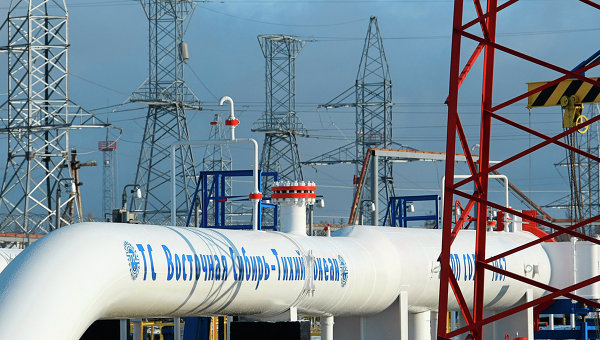
Is There at Long Last a Russo-Chinese Gas Deal?
Publication: Eurasia Daily Monitor Volume: 10 Issue: 47
By:

In advance of new Chinese President Xi Jinping’s forthcoming visit to Moscow, a major “deliverable” has finally emerged. On February 27, Gazprom and the China National Petroleum Company (CNPC) announced their agreement to conclude negotiations on the long-stalled Russo-Chinese natural gas deal by year’s end. Specifically they agreed to step up negotiations for Moscow and Beijing to agree on the sale of Russian gas to the People’s Republic of China (PRC). The parties confirmed previously arranged “basic parameters” of Russian gas exports to China that include the volume of gas to be delivered—38 billion cubic meters (bcm)—the starting date of supplies, their duration, the delivery point on the Russo-Chinese border and unspecified other conditions (see EDM, March 6).
If this accord is reached and the two governments resolve the key issue of price, which has been the major stumbling block, both sides will benefit from this joint breakthrough. Moreover, a significant possibility would then exist for future deals regarding liquefied natural gas (LNG) transfers from Russia to China as well. Indeed, both sides reportedly also reached agreements on oil, nuclear and coal energy issues (China Daily Online, February 26). To reach this accord, Moscow gave up the idea of a western pipeline from Russia’s Altai Republic that would annually ship another 32 bcm to China’s western regions. The PRC evidently does not need gas flows in the west as desperately as it does on its east coast and was unenthusiastic about paying the European-level price that Russia demanded for it (Interfax, February 27)—which suggests the potential for future discord because price will be the subject of the forthcoming negotiations. Hitherto, Moscow has insisted on receiving a European market price for its gas, but China has successfully resisted paying that amount. Gazprom yielded on the western gas pipeline because Moscow finally decided to develop the Chayanda gas condensate field in Yakutia at the end of 2012 (Interfax, February 27). Furthermore, looming pressure in the international markets stemming from the shale gas bonanza in the United States also forced Moscow to make a concession here. China is already importing gas from Turkmenistan, Australia and Indonesia, while further dithering on Moscow’s part would only have allowed the US to step in and undercut Russia. Alternatively, China could also try to develop its own abundant shale gas reserves in the future.
The other important point of this Sino-Russian agreement pertains to LNG. Both parties discussed the possibility of Russian LNG shipments to China, particularly from the Vladivostok area (sptimes.ru, February 27). But, to Gazprom’s detriment, Vladivostok is not the only possibility for LNG exports. China and South Korea are both interested in participating in the Yamal LNG project (Interfax, February 27, 28). Unlike Vladivostok, the Yamal LNG project’s controlling shares are owned by Novatek, Gazprom’s rival (Interfax, February 27, 28). If the Yamal project becomes the focus of LNG deliveries to Northeast Asia, Chinese and South Korean interest would enable Russia to leverage both governments in order to become a major gas provider for the region. Russia would thereby greatly advance its energy and overall Asian development strategy by opening up a stable and large gas program to one or more regional buyers that could generate further investments and increase Russian economic and political influence in Northeast Asia. Indeed, Deputy Prime Minister Arkady Dvorkovich, who headed Russia’s negotiating team, conceded the impetus of shale gas as well as both sides’ strategic imperative to come together due to deteriorating relations with Washington. He observed that, “There are complementarities, necessities and possibilities for us to strengthen energy cooperation; and more than that, the cooperation has strategic significance” (China Daily Online, February 26).
Beyond the benefits of this and potential future agreements with China, there is a significant domestic component to this deal. Dvorkovich and Gazprom are waging a highly public battle with both Igor Sechin, the head of Russian oil giant Rosneft, and Novatek. Gazprom faces declining demand at home and in Europe, high costs, rent-seeking, excessive government taxation, over-spending on unrelated projects, and the prospect of US-led shale gas and LNG transformations overtaking it. This deal with China is, therefore, enormously important to Gazprom given the Russian gas monopoly’s plans for major Far Eastern investments and the pressure from its domestic competitors (Moscow Times, December 26, 2012).
Rosneft, not to be outdone, simultaneously proposed a $30 billion oil-for-loans deal with China, possibly doubling Russian petroleum exports to the PRC. The deal would make China the largest consumer of Russian oil and further divert supplies away from Europe (RT, February 14; Reuters, February 23). China would certainly find it attractive to place Rosneft in debt to it by so great an amount, but either the existing oil pipeline would have to be doubled or a second one built necessitating a huge investment. Moreover, though Beijing loaned Rosneft and Russian state-owned pipeline manager Transneft the money to build the original oil pipeline to China—the East Siberia–Pacific Ocean or ESPO pipeline—that project became ensnared in litigation until Russia dropped the export price. Moscow is not likely to do that again without pressure.
It thus appears that Moscow and Beijing have turned a corner on their long-standing gas pipeline project, but the issue of price remains to be resolved. Second, both governments are trying to draw closer together by overcoming long-standing obstacles to their relationship; and the likely catalyst for this is a shared sense of US pressure. Third, these deals, if they materialize, will considerably strengthen Russia’s standing in Asia as well as Moscow’s Asian policy. But it also is true, finally, that the rivalry among Novatek, Rosneft and Gazprom indicates that Russian energy and foreign policies are frequently driven by rival business and factional interests. Those rivalries will clearly not go away anytime soon.




